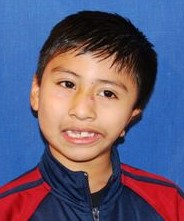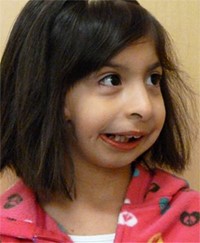Hemifacial microsomia
Hemifacial Microsomia
Hemifacial microsomia is a condition where one side of the face is underdeveloped. It is the second most common craniofacial difference after cleft lip and palate.
Causes

Currently, we believe hemifacial microsomia is caused by factors that affect the development of the face during the first three months of pregnancy. It is not caused by anything a parent did or did not do. Genes are not believed to be involved which means it is not inherited, or passed from parent to child. If a couple has a child with hemifacial microsomia, there is about a 3 percent chance they will have another child with the condition.
Although children with hemifacial microsomia may look different, their ability to think and reason is not typically affected. As children grow and develop, concerns about self-esteem and self-confidence become an important part of treatment.
Symptoms

Hemifacial microsomia may be mild or more involved. The lower part of the face is usually shortened because the lower jaw is underdeveloped. The eye and eye socket, cheek and ear can also be affected. If the ear is involved it may be underdeveloped, differently shaped or missing. Sometimes there are skin tags (small bumps or growths) in front of the ear. Hearing, speech and chewing skills may be affected. If the forehead or skull is also affected, the term used to describe the condition is craniofacial microsomia.
Goldenhar syndrome (also known as oculo-auricular-vertebral dysplasia) is a similar condition; however, children with Goldenhar syndrome have additional physical issues. These include spinal problems and non-cancerous (benign) growths on the eye.
Treatment
Treatment is complex and usually requires multiple stages and reconstructive surgeries as a child grows. The skull, eye socket and cheek bones need surgery when children are young. Timing for jaw reconstruction depends on whether a child has breathing or feeding problems. Ear surgery usually occurs in the school-age years. It is important that a child has dental care and monitoring from providers experienced in caring for children with craniofacial conditions. Our team includes specialists with expertise in this area.
Children with hemifacial microsomia, craniofacial microsomia or Goldenhar syndrome need long-term follow up by a multidisciplinary team. These are complicated conditions and experts from different medical, surgical and dental specialties need to work together to provide the best care for a child.
